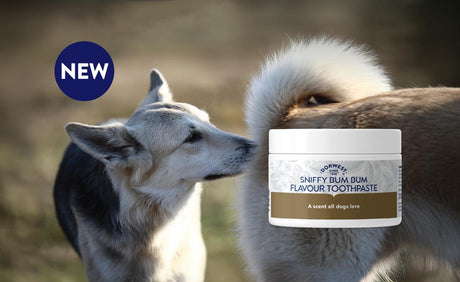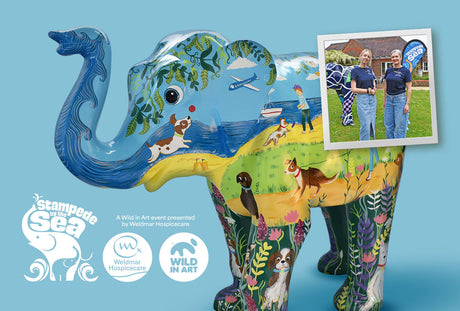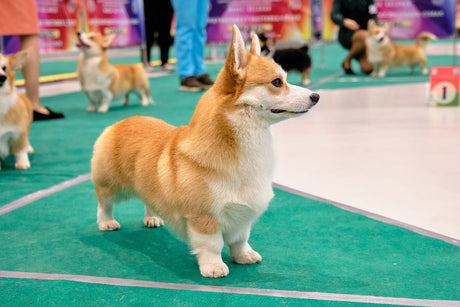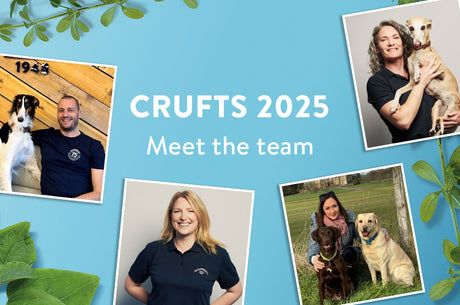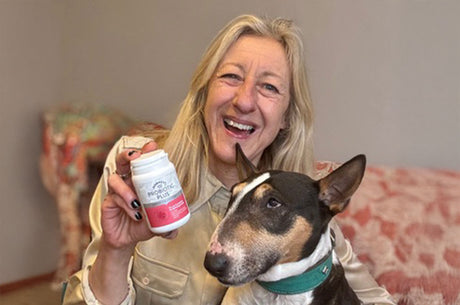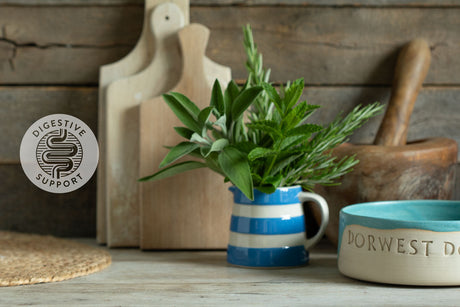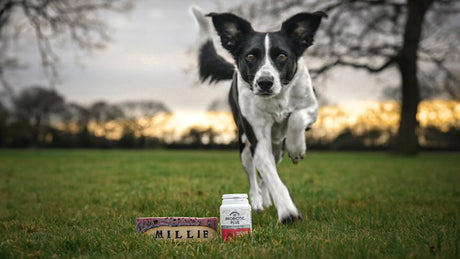Step 2: Your dog's itchy skin, grooming for relief
"My dog's got bald patches - what can it be?" "We've been unlucky; her breed is susceptible to skin issues." "He must have got it from a dog at the park, and now he never stops scratching! What can I do?"
 As a groomer, these are some of the frequent things we hear from dog owners.
As a groomer, these are some of the frequent things we hear from dog owners.
There are so many causes for skin complaints in our dogs and it's a topic that cannot be completely addressed in a few words, so my aim is to give some tips on what to look out for and what we can do to look after and improve our dogs' skin health.
Skin issues can have both internal and external causes, making it one of the more difficult complaints to diagnose and treat and often there is more than one underlying factor. The skin, being the largest organ of the body, is often the first place any indications of poor health materialise and by checking your dog daily you will easily and quickly notice any changes to the skin and coat. (Please remember to get your dog checked by a vet if you notice any sudden changes in your dog’s skin and general health.)
Thankfully, there are things we can do as 'pet parents' to minimise, eliminate or prevent the onset of some skin problems.
Brushing and combing your dog daily is important to maintain a healthy skin and coat. You will need to ensure that you brush and comb right through the coat to the skin and that you have the correct tools for your dog's coat type. Your dog's skin is much thinner than ours, with the epidermis (or top layer of skin) being only 3-5 cells thick, compared to a humans 10-15 cells thick, so keeping the coat in tip top condition is important for the protection of your dog’s skin. Keeping the dead or moulted hair off our dogs ensures the new hair has room to grow and allows proper circulation over your dog’s skin, whilst still providing the important protection the skin needs. This grooming also helps stimulate healthy blood circulation in addition to removing dirt, dead cells and dander from your dog’s skin and coat. Without proper brushing and combing knots begin to form close to the skin, if left for too long these will pull tighter, not only causing discomfort by constantly pulling on the skin, but they prevent air reaching the skin. This means the skin cannot breathe and is unable to regulate your dog’s body temperature. The matted coat also harbours impurities and pollutants that will have a very detrimental effect to your dog’s skin and general health.
Keeping your dog clean, particularly around the mouth, ears, groin and feet can help immensely with preventing the spread of skin irritants and bacteria that could cause itchiness or inflammation. There are cleansing wipes for ears and topical disinfecting cleansers for sanitary areas and feet. Keeping your dog’s ears clean and removing excess hair inside the ear is important, as the ear has a large surface area of skin. This skin, being a warm, moist environment can be prone to yeast and bacterial infections, which are easily passed to other areas of the body on your dog’s feet and nails from scratching and licking. By cleaning the lips with an antibacterial wash or wipe you can help to prevent the spreading of bacteria through licking. Similarly, keeping the feet and toes free from germs and bacteria will lessen the spread from scratching.
Regular bathing of your dog is important in maintaining healthy skin as it washes any allergens out of the coat. A good quality shampoo is a must have and my preference is a shampoo that is more natural and contains no artificial colourants, sls or sles. If your dog already has sensitive skin I would recommend a soothing, hypo-allergenic, natural shampoo, I find ones containing oatmeal to be very good. When bathing your dog you are rinsing away any dirt and debris on the skin and coat, thus creating an environment where bacteria are not so likely to grow. It is important to note that thorough rinsing of the shampoo from your dog is important to prevent any irritation, the natural shampoos rinse away much easier that traditional shampoos.
All dogs moult naturally all the time, but excessive shedding can be caused by an underlying factor and/or skin problems. Some common symptoms to look out for are:
• A coat that has become brittle and dry, falls out unevenly or leaves bald patches that may or may not be tender to the touch
• Excessive licking, scratching and biting
• Hotspots
• Redness, rash and/or inflammation, either all over the body or in patches
• Greasiness to the skin and coat
• A yeasty smell from skin and ears
• Rough and scaly skin
• Sores around the mouth and nose and sores and inflammation between the pads or around the nail beds.
Please remember that keeping our dogs well-groomed is only one aspect of eliminating and preventing skin problems. Other contributing factors can include diet, stress, environmental factors and hereditary issues.
This simple, daily grooming regime goes a long way to ensuring we give our dogs the best care.
Sally Hart, Tailwaggers Dog Grooming
I qualified as a canine beautician in 1995 in South Africa. I opened my first grooming salon that year at a veterinary practice, and in the following years I built it up to become the most highly recommended salon in the area. My interest in animals started in childhood, when I started training my first dog when I was 14. My first job was trainee kennel manager for a boarding and breeding kennels. But it was my second job in a groomers that made me realise how much I loved grooming. I opened my first salon in South Africa in 1995 and I moved to the UK in 2001 and spent a few years working for the State Veterinary Service. We opened Tailwaggers Dog Grooming in 2006 and I passed my City and Guilds Level 3 Qualification in Advanced Dog Grooming in 2010. I co-host and organise grooming seminars and educational events through the year and continually update my skills and knowledge by attending events and training as often as I can. In 2014 and 2016 I was part of a team doing grooming demonstrations at Crufts and I occasionally compete in grooming competitions. I am still doing some dog training with our own dogs and regularly give educational talks and advice at local puppy classes.
